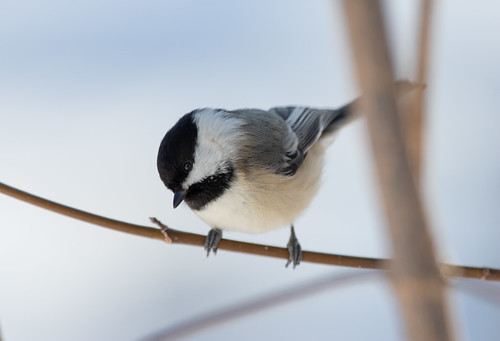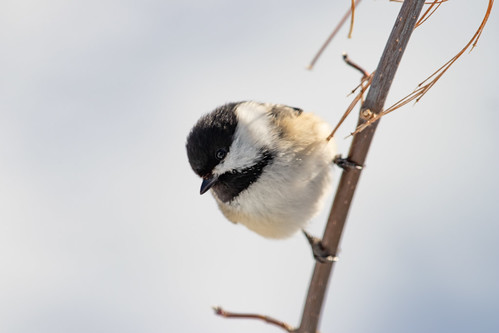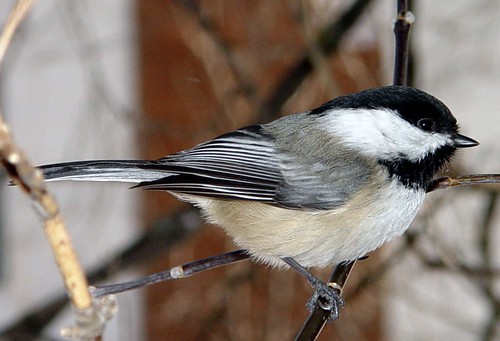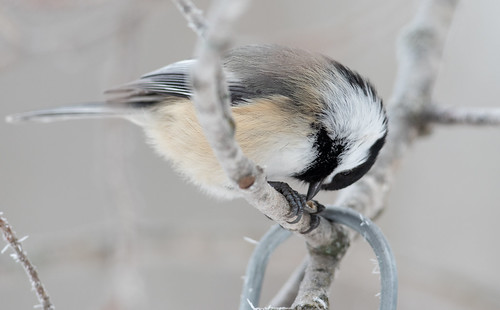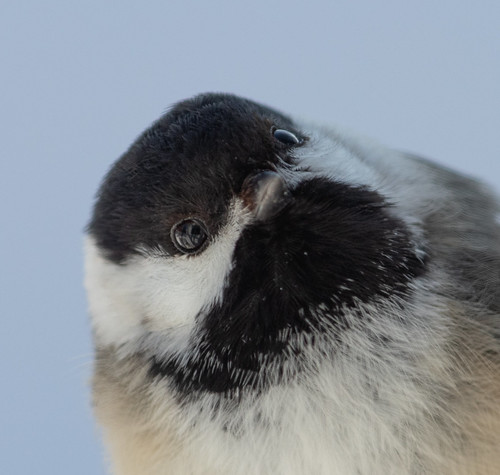I’m writing this on March 2, 2019, 44 years to the day after I set out on my very first birding adventure and saw the #1 bird on my lifelist, a Black-capped Chickadee. I celebrate every March 2 as Chickadee Day. My Minimum Daily Requirement of birds always includes at least one chickadee, but somehow, seeing a chickadee on Chickadee Day seems even more urgent.
So I started out the day at my home office window, where I whistled a chickadee song. Within seconds, in flew a chickadee, then two more, then another half dozen. I cranked open the window and held out a handful of live mealworms; one by one in they flew. A few are shyer than the rest, so after the brave ones flitted off with their first course of breakfast, I put the rest of the mealworms in a window feeder.
This being Chickadee Day, before I closed the window, I took a bunch of photos, but only for a minute. My windows are the crank-open type, and I didn’t want to risk collisions—injuring or killing a chickadee on Chickadee Day would be even more unforgivable and ironic than on any other day. In the 38 years we’ve lived in our house, we’ve not yet had a chickadee window collision that we’re aware of, and we’ve been pretty vigilant. Any window-kill is a tragedy, but because I get so much inspiration and joy from them, seeing a dead chickadee is even more gut wrenching for me than seeing any other innocent dead bird.
Chickadees aren’t very colorful to human eyes—a realistic painting would require a palette of just black, white, gray, and buffy brown. To their own eyes, chickadees are much more colorful, but we mere humans can’t see in the ultraviolet range.
I gave a talk about chickadees at the TEDx-Bemidji event in October. During break, Maureen O'Brien led a chickadee-painting workshop. I went in to observe, and somehow found myself trying my own hand at it. Chickadees are so simply patterned that you’d think they’d be an easy subject, but the most important element of any bird photo or painting is the eye, and getting an almost perfectly black eye to stand out against the almost perfectly black cap is hard to do even for someone with experience. This was the first time in my adult life that I held a paintbrush. My effort was very primitive, but I'm hanging onto it anyway.
I took my first chickadee photographs in 2002.
Chickadees don’t crack open the shell and then pull out the heart. Rather, they peck a tiny hole in the shell, bite off and eat a tiny bit of the heart, and take another bite of the heart or another peck at the shell, little by little chipping away half the shell as little by little they eat the heart. If they get scared off, dropping the seed, they’ve still taken in some calories. I’ve seen this close up when I was rehabbing, but wasn’t taking pictures yet, so I was thrilled to finally get a photo of this.
Yes, 44 years after seeing my first chickadee, and paying an awful lot of attention to them throughout every one of those years, I’m still learning and observing new things and finding ever more reasons to hold them dear, and ever more reasons to provide nourishing, tasty food to my backyard chickadees and to try my hardest these interesting and endearing little beings.
